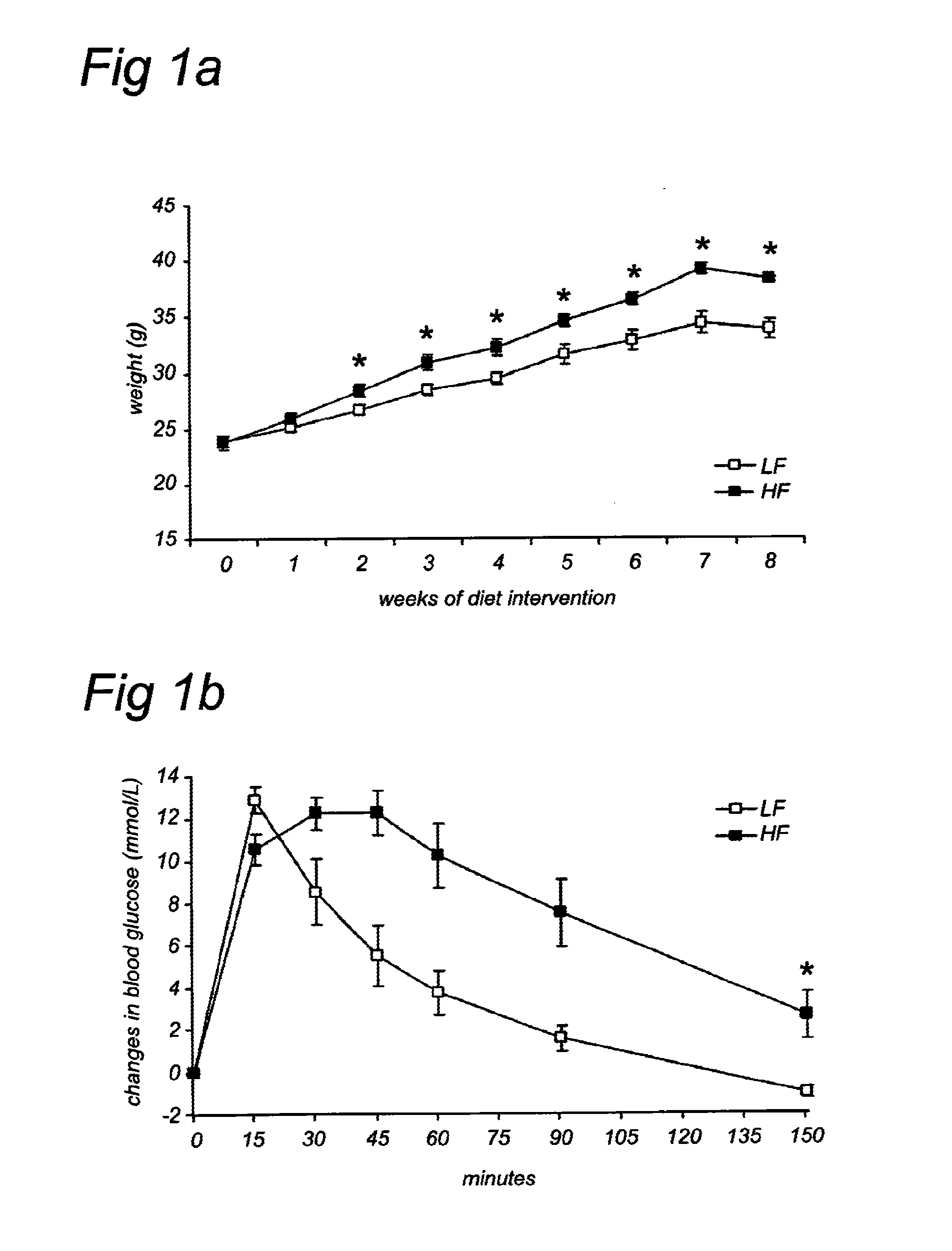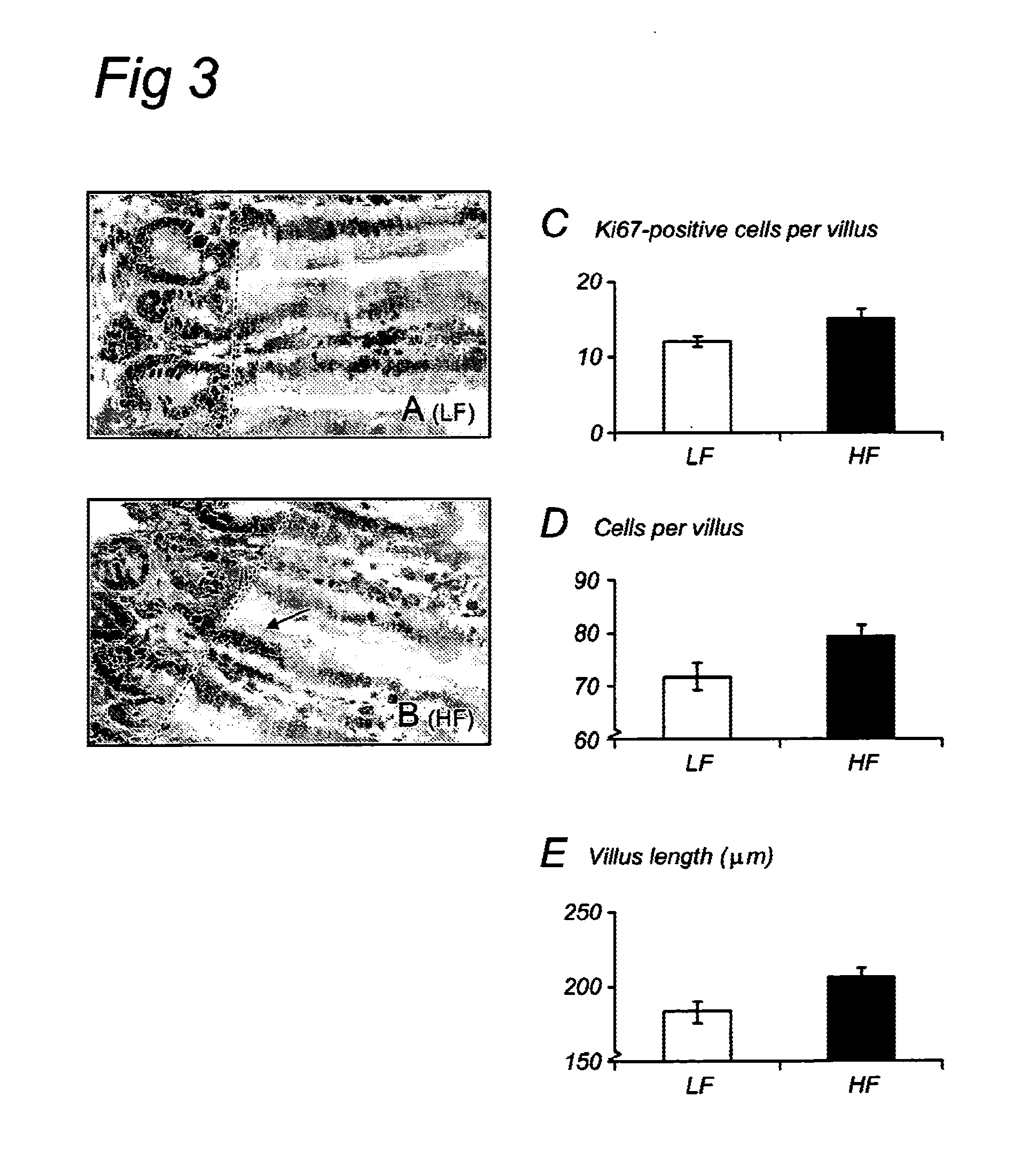Diagnostic of pre-symptomatic metabolic syndrome
a metabolic syndrome and metabolic syndrome technology, applied in the field of diagnosis of presymptomatic metabolic syndrome, can solve problems such as inability to find markers
- Summary
- Abstract
- Description
- Claims
- Application Information
AI Technical Summary
Benefits of technology
Problems solved by technology
Method used
Image
Examples
examples
Materials & Methods
Animals and Diets
[0074]Male C57BL / 6J mice were purchased from Harlan (Horst, The Netherlands) and were housed in the light- and temperature-controlled animal facility of Wageningen University. They had free access to water and prior to the diet intervention they received standard laboratory chow (RMH-B, Arie Blok BV, Woerden, The Netherlands). All experiments were approved by the Ethical Committee on animal testing of Wageningen University.
[0075]In this study we investigated the effect of dietary fat on development of obesity and insulin resistance and on small intestinal gene expression in C57BL / 6J mice. After a run-in period of 3 weeks on the low-fat diet, 9 week old mice were fed a powder high- or a low-fat purified diet for 2, 4, and 8 weeks (n=6 per diet, per time point). Low-fat and high-fat diets are based on ‘Research Diets’ formulas D12450B / D12451, with adaptations regarding type of fat (palm oil in stead of lard) and carbohydrates to mimic the fatty acid...
PUM
| Property | Measurement | Unit |
|---|---|---|
| time | aaaaa | aaaaa |
| time | aaaaa | aaaaa |
| time | aaaaa | aaaaa |
Abstract
Description
Claims
Application Information
 Login to View More
Login to View More - R&D
- Intellectual Property
- Life Sciences
- Materials
- Tech Scout
- Unparalleled Data Quality
- Higher Quality Content
- 60% Fewer Hallucinations
Browse by: Latest US Patents, China's latest patents, Technical Efficacy Thesaurus, Application Domain, Technology Topic, Popular Technical Reports.
© 2025 PatSnap. All rights reserved.Legal|Privacy policy|Modern Slavery Act Transparency Statement|Sitemap|About US| Contact US: help@patsnap.com



